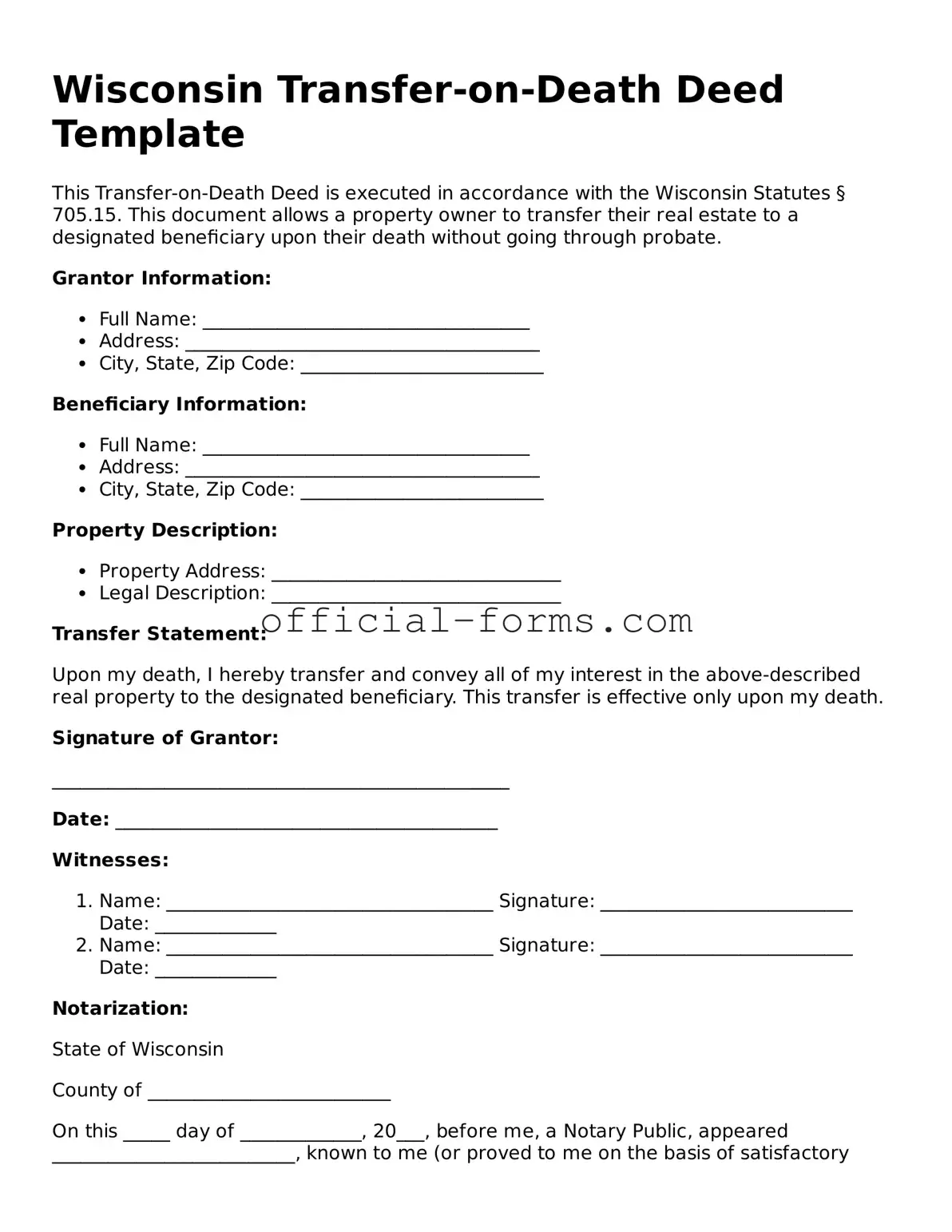Filling out the Wisconsin Transfer-on-Death Deed form can seem straightforward, but many people make common mistakes that can lead to complications. One frequent error is failing to include all required information. It’s essential to provide complete details about the property and the beneficiaries. Omitting even a small piece of information can result in delays or disputes later on.
Another mistake often made is not properly identifying the property. The deed must clearly describe the property being transferred. Using vague terms or failing to include the legal description can create confusion and may invalidate the deed. Always ensure that the property is accurately and completely identified.
Many individuals also overlook the importance of signatures. The Transfer-on-Death Deed must be signed by the owner. If more than one person owns the property, all owners must sign. Failing to obtain the necessary signatures can nullify the deed, making it ineffective when the time comes for the transfer.
In addition, people sometimes forget to have the deed notarized. Wisconsin law requires that the deed be notarized to be valid. Notarization serves as a safeguard, confirming the identities of the signers and ensuring that they are signing willingly. Without this step, the deed may not hold up in court.
Another common error involves not recording the deed properly. After completing the form, it must be recorded with the appropriate county register of deeds. Failing to do this step can mean that the transfer does not take effect as intended. Recording the deed is crucial for ensuring that the transfer is legally recognized.
Some individuals also neglect to review the deed after filling it out. Mistakes can easily go unnoticed, and a simple review can catch errors before they become problematic. Taking the time to double-check all information can save significant trouble down the line.
People sometimes misunderstand the implications of the Transfer-on-Death Deed. They may believe that it serves as a will, but it does not replace the need for a comprehensive estate plan. It’s important to understand that this deed only transfers property and does not address other assets or debts.
Finally, many fail to inform beneficiaries about the deed. It’s a good practice to discuss the Transfer-on-Death Deed with those named as beneficiaries. This ensures that they are aware of their future interest in the property and can help avoid confusion or disputes among family members when the time comes for the transfer.
